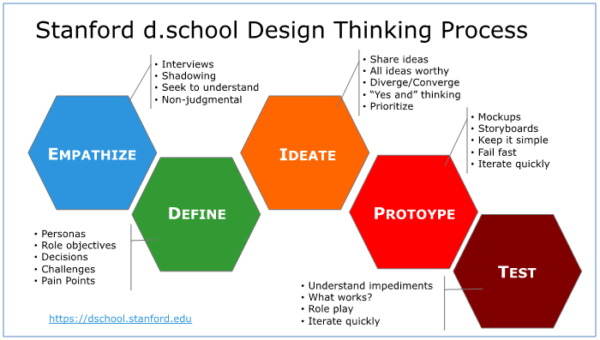Ever feel like you just don’t have the motivation you need to get you through your work week? Yeah, me too. PLENTY of times.
That’s the case for all of us. Even though you’re working for a nonprofit, social enterprise, or other cause-focused organization, having a great mission is unlikely to make every day a joy-filled experience. It’s possible that there is something going on externally or internally to derail you, or maybe you’re just having a “off” day. It’s natural.
So, when my intern, Kirsten, brought this topic up as a blog post she’d like to write, I jumped at it. It’s an issue that plagues even the most hard-working among us: What do you do when motivation is scarce?
Read on for the answer . . .
A few weeks ago, I heard my Marketing Research professor say something that completely changed my outlook on getting things done in school and at work. He stated, “Motivation is overrated, while discipline is underrated.”
This statement spoke volumes in my world. So often, I wait for the motivation to get tasks done, and if it doesn’t come along, I end up rushing through the task as the deadline gets closer, and the work ends up being mediocre.
I find myself spending unnecessary time searching for the right motivational playlist, reading a few uplifting quotes, or giving myself a pep talk in an attempt of encouragement. I’ve relied on motivation for too long, which is why discipline needed to be incorporated into my lifestyle.
What I’m learning is that discipline can create a kind of ease to your career because it builds a routine and mindset to get things done . . . even when you don’t “feel like it.” With discipline, you don’t have to wait for inspiration because you already have an effective system on-call.
Motivation vs. Discipline
Motivation is defined as the desire or willingness to do something. Discipline, on the other hand, can be described as training oneself to do something in a controlled and habitual way.
While motivation is what many of us crave on a day-to-day basis, it’s simply not possible.
There may be times while working at a nonprofit or social enterprise when the motivation just isn’t there. Work may seem overwhelming, deadlines are fast approaching, the problem you’re solving may seem too big, or frankly, maybe you’re just having a bad week. This is when discipline should come into play to keep the work flowing.
Two key components of discipline are momentum and consistency. You can often create momentum by focusing on the bigger picture (remembering why you’re doing the work), and then take advantage of momentum once it’s underway. Let that be the push you need to get started. Then, show up again and again by finding a rhythm or routine you can maintain.
Consistency creates the habitual practice of discipline. Once it becomes second nature, you won’t have to worry so much about being motivated to do the work.
5 Effective Ways to Incorporate Discipline Into Your Work
Now that we’ve got the differences between motivation and discipline out of the way, here are some steps you can take to build discipline into your work week.
1. Cut Out Distractions
In today’s world, distractions are abundant. Social media constantly tempts us, friends call or text at the worst times, Netflix begs us to binge, and so much more.
One of the simplest and best ways to minimize distractions is to create a physical space that limits interruptions. Whether it’s turning your phone on silent, making sure your chair is comfortable, or removing clutter (both on your desk and on your screen), it’s important to design your workspace for maximum focus.
If you work from home and find your thoughts drifting to cooking, laundry, and cleaning, you may even need to consider moving to a coffee shop or co-working space so that you can get more done.
Work with a team? According to an article by Inc. Magazine, three out of four people feel distracted while at work. Eighty percent of those surveyed also claimed that the number one distraction is chatty co-workers, with 60% saying meetings are another inconvenience.
If you have a chatty co-worker, kindly remind them that you are working on an assignment with a deadline fast approaching, and perhaps even offer an alternative time when you can catch up. But try not to let them take your mind off the task at hand.
Meetings, however, are usually hard to avoid, so make an effort to do as much work as you can beforehand. Depending on your role, you may also be able to help keep the meeting focused and on track, so everyone’s time is respected.
2. Create a Plan and Prioritize
Before you jump into your To-Do List, create a sensible plan of what you would like to get done, and if possible, write it down or use a free project management software like Asana to track it. Each item should be thought out and prioritized. There are also other tools that integrate with Asana to help keep you on track and streamlined in your work process.
We tend to overestimate how much we can actually accomplish during a day, so this exercise will not only help you determine the most important tasks, but decide what will make you feel accomplished when the day is done.
Classy.org has a great article that mentions prioritizing work in nonprofits. One of the tips that was included mentioned prioritizing work in four categories: Important, Not Important, Urgent, and Not Urgent.
Work may be important, but not urgent; not important, yet urgent. Classy suggests focusing on the tasks that are important first, then order them by urgency.
Alternatively, we previously offered suggestions on how to make time for marketing. These same ideas can be applied to any project or task at hand.
The takeaway is to be show up intentionally for your day, and not to let it simply unfold.
3. Be Accountable
Accountability is all about being responsible, to ourselves and maybe even to others. It’s important to acknowledge that you are responsible for all the work that you create, whether you are an organization of one or thousands.
There are many ways to hold yourself accountable. One simple way is to track your progress, and reward yourself along the way. Just be sure to find something that truly feels like a reward, such as a break, a piece of chocolate, a peek at social media, or for some of us, the simple satisfaction of physically scratching an item off our To-Do List.
Another way to hold yourself accountable is through an accountability partner or mastermind group. Whether you choose one person or several people, make sure they understand your goals and needs, and won’t just be a yes-man. Even better, offer to return the favor so everyone makes progress on things that matter to them.
4. Be Consistent
As we talked about above, another surefire way to move from motivation to discipline is to be consistent. Consistency builds habits, which are powerful in keeping you on track when you just don’t “feel like it.”
Routines may not sound exciting, but they can in fact, lead to a thriving social impact organization. Once you become more consistent, you’ll find tasks become easier, and your workload may even feel lighter.
This article by Chron.com, suggests that consistency in the workplace helps with the appearance of the organization and higher levels of productivity. Compared to workplaces that change often, consistency shows employees that there’s order and stability in the organization. This also helps with productivity because learning new ideas and processes take time, whereas a routine allows people to get better at what they already know.
Even getting to work on time or going to scheduled lunches can be a great start to building your routine. From there, take a look at these eight good work habits: wellness, self-presentation, timeliness, productivity, organization, attention to detail, follow-through and consistency, and initiative. Taking the time to develop these habits suggests that you are mature, trustworthy, and dependable—an employer’s dream!
5. Take Care of Yourself
Self-care is important as well. There are times to push through the day and work, and times that it will serve you better to stop and start again another day.
When you work for a cause, it’s easy to look at the important work in front of you and think there is no time to slow down. But if you do that for too long, it can lead to burnout.
Burnout can disrupt your newfound routine of discipline, and also makes it impossible for your best work to be done, which is what your cause deserves.
Think you might be experiencing burnout? In the recent Dice.com article, Burnout is Now an Official Medical Condition, there are three markers that define it:
Feelings of energy depletion or exhaustion
Increased mental distance from one’s job, or feelings of negativism or cynicism related to one’s job
Reduced professional efficacy
The World Health Organization states that one must have all three markers in order to truly feel burnout at work. And a few ways to reduce burnout include having a creative outlook, having a support team, and taking vacations. It’s also important to note that if you’re feeling burned out, the time to address it is now. Don’t let it continue affecting you or your work.
While motivation feels great, and gives you a good start on building momentum, it just isn’t enough to accomplish your goals long-term. Discipline may feel hard, but it doesn’t have to be, and the good news is that it can be created over time and in stages.
Remember, motivation is overrated. Discipline is underrated.
Through discipline, work becomes easier and more efficient. And, in time, you will see the progress you desire, and your work will thrive!
“People often say motivation doesn’t last. Neither does bathing—that’s why we recommend it daily.” - Zig Ziglar
Hi! I’m Kirsten M. King, and I absolutely love anything dealing with marketing, from advertising to data and everything in-between. I also love to learn and expand my knowledge on current trends and issues.
As a recent marketing major graduate of Georgia State University, I look forward to taking my skills and using them towards a career in project management.
I’m Kristi Porter, and I help cause-focused organizations understand and execute effective marketing campaigns so they can move from stressed to strategic. Your resources may be limited, but your potential isn’t. Whether you’re a nonprofit, social enterprise, or small business who wants to give back, I’ll show you how to have a bigger impact.


















































